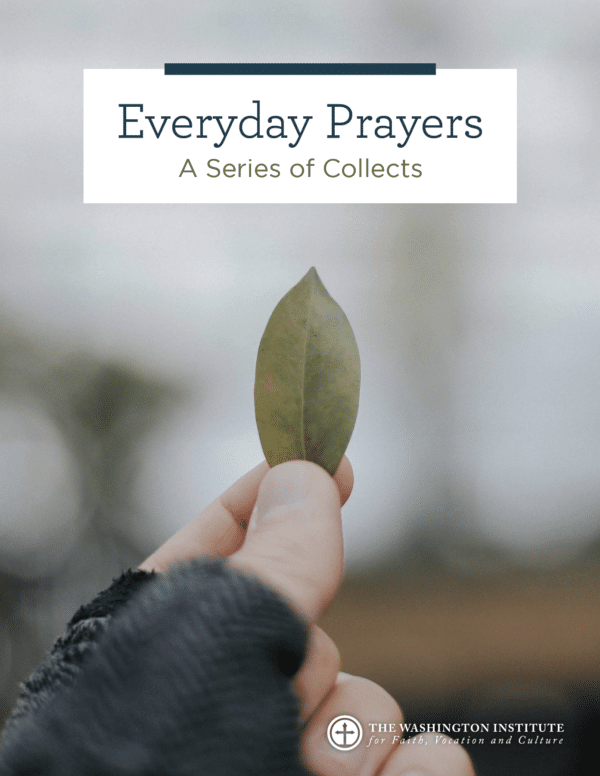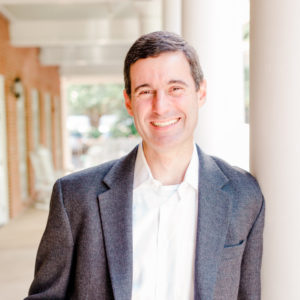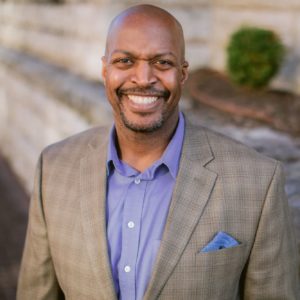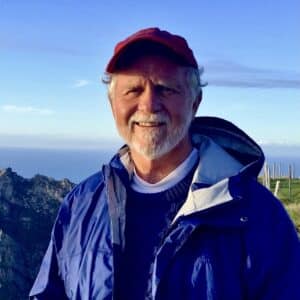In 1954, about a year before the Montgomery bus boycotts, Dr. Martin Luther King Jr. preached a sermon at his church in Montgomery, Alabama on Romans 12:1–2 entitled “Transformed Nonconformist.” In it, he said this:
“Our world needs a dedicated circle of transformed nonconformists. Our planet teeters on the brink of annihilation. Dangerous passions of pride, hatred, selfishness are enthroned in our lives, and men do reverence before the false gods of nationalism and materialism. The saving of our world from pending doom will come not through the complacent adjustment of a conforming majority, but through the creative maladjustment of a non-conforming minority.”
He would preach this sermon several times throughout his ministry. And each time he would deliver it, his voice would rise in homiletical crescendo as he drove his listeners to the point of personal repentance and decision:
“We must make a choice. Will we continue to march to the drumbeat of conformity and respectability, or will we—listening to the beat of a more distant drum—move to its echoing sounds? Will we, risking criticism and abuse, march to the soul-saving music of eternity?”
Less than a year later, Dr. King found himself at the center of this very circle of transformed nonconformists that he preached about. He was thrust, somewhat unexpectedly, into the role of leading the thousands of women and men whose ears had been awakened to the melody of eternity and had begun to feel the cadence of that distant drum in their very bones.
Dr. King’s biblical words of challenge resonated deeply then; they remain profoundly relevant for us today. In our world rife with political violence, deep tribal divisions, and moral justifications for hatred, this vision of a circle of transformed nonconformists—a people who are creatively maladjusted to this world—is an important and urgent moral challenge. It is a crucial time for those who are followers of Jesus to hear the echoing rhythms of an alternate kingdom rather than the drumbeat of a political party or ideological conformity. And to have that rhythm get so deep into their bones, that no matter what siren song the world may be playing—of political power, of culture wars, of materialistic comfort—their feet and hips and shoulders sway defiantly to the rhythm of their true home, the upside-down Kingdom of God. It may look like madness to the world, but as Frederick Nietzsche is attributed with saying, “Those who were seen dancing were thought to be mad by those who could not hear the music.” For the Christian, to be tuned firmly into the music of eternity and to have one’s imagination captivated by a vision of that final City of God, this will be the secret to a life of joyful nonconformity in a world that too often feels like it has gone mad.
I begin with this stirring image of the echoing drumbeat of the Kingdom of God, what one writer has referred to as the “cadences of home,” because I believe that the imagination has a crucial role to play in forming lives of joyful nonconformity. The Old Testament prophets, I believe, understood this as well. Their work as poets and carriers of the apocalyptic was aimed at piercing the moral imagination of the people of God, precisely because mere moral reasoning had not gotten through to them. Spiritual smelling salts need to be directed at the right organ to do their work. And that organ, for the prophets, was the imagination.
One of the most powerful visions of the final City of God in all of Scripture is found in Isaiah 60. It is a vision of the New Jerusalem that had so deeply lodged itself into the imagination of God’s people that when the Apostle John received a vision from the Spirit on the island of Patmos, it was Isaiah’s old city that provided the imaginative raw materials. To revisit the City of God in Isaiah 60 is to excavate the city underneath the city found in Revelation 21, grand finale of all of Scripture.
Isaiah’s vision of the City of God doesn’t begin with a sweeping, panoramic view of the city itself, as one might expect. Instead, it begins from a vantage point inside the city, looking out onto the surrounding countryside. It asks us to imagine the sun rising, at long last, on the distant horizon, the light of its glory slowly spreading to touch every corner of the landscape. Before long, its lengthening rays reveal a stream of nations, drawn toward the dawn that is rising above this great city. Engage your imagination as you read the prophets words to Jerusalem:
“Arise, shine, for your light has come,
and the glory of the Lord rises upon you.See, darkness covers the earth
and thick darkness is over the peoples,
but the Lord rises upon you
and his glory appears over you.Nations will come to your light,
and kings to the brightness of your dawn.“Lift up your eyes and look about you:
All assemble and come to you;
your sons come from afar,
and your daughters are carried on the hip.Then you will look and be radiant,
your heart will throb and swell with joy;
the wealth on the seas will be brought to you,
to you the riches of the nations will come. (Isaiah 60:1–5)
Imagine the slant of the early sunlight. Remember the smell of those mornings when you were up so early you were waiting for the sun. Think of the vastness of the sea and the tidal rhythms of its life. Imagine all the bewildering sights and sounds of nations upon nations in endless procession all converging on a single city, carrying the riches and splendor of their civilizations with them.
But Isaiah doesn’t leave all the details of the wealth of the nations to our imagination. He sees in his vision incredibly specific cultural goods and commercial products:
Herds of camels will cover your land,
young camels of Midian and Ephah.
And all from Sheba will come,
bearing gold and incense
and proclaiming the praise of the Lord.All Kedar’s flocks will be gathered to you,
the rams of Nebaioth will serve you;
they will be accepted as offerings on my altar,
and I will adorn my glorious temple.“Who are these that fly along like clouds,
like doves to their nests?Surely the islands look to me;
in the lead are the ships of Tarshish,
bringing your children from afar,
with their silver and gold,
to the honor of the Lord your God,
the Holy One of Israel,
for he has endowed you with splendor. (Isaiah 60:6–9)
Pause to listen to the bleating of the sheep and the rams and camels. Think of how they smell, the touch of their wool. Imagine looking up at the prow of the enormous ships that have just docked from the far-off land of Tarshish. Notice the unique patterns engraved along its edges and feel the hard, weather-worn wood of its vast hull.
“Foreigners will rebuild your walls,
and their kings will serve you.
Though in anger I struck you,
in favor I will show you compassion.Your gates will always stand open,
they will never be shut, day or night,
so that people may bring you the wealth of the nations—
their kings led in triumphal procession.For the nation or kingdom that will not serve you will perish;
it will be utterly ruined.“The glory of Lebanon will come to you,
the juniper, the fir and the cypress together,
to adorn my sanctuary;
and I will glorify the place for my feet. (Isaiah 60:10–14)
The walls of this city, in my imagination, tower far above my head. The thick, heavy iron doors of the gates are swung open and the archway of the gates soars high above as I walk through the gates. And the nations pour in through these gates, ready to offer their wealth in service of the God of Israel. I imagine the smell of the majestic cedars of Lebanon, cut and carried in on long carts, ready to be used in the sanctuary. And finally, jumping down to verses 18–19, we read:
No longer will violence be heard in your land,
nor ruin or destruction within your borders,
but you will call your walls Salvation
and your gates Praise.The sun will no more be your light by day,
nor will the brightness of the moon shine on you,
for the Lord will be your everlasting light,
and your God will be your glory.
The sounds of the city are no longer the sounds of violence and destruction. Instead, the streets are filled with laughter and praise and dance and song. Its alleyways are flooded with the supernatural light of the countenance of God himself.
It is a breath-taking vision. Take an extra moment to allow your imagination to gaze upon this great city. Take it all in. Because according to both the prophet Isaiah and the Apostle John, that city is where human history is heading. That is our true home. The melodies and cadences of that city, which float across the ages to us, is the drumbeat that can get in our bones if we let it. And it will set our lives dancing in the streets today.
While there are many features of this city we could give our attention to, there are three that especially stir and capture my imagination.
The first is that the city described by Isaiah is a strikingly earthy and material city. As you imagined it, did you notice how concrete all those details were? As you engaged your imagination, you could almost feel the different physical elements of this city. This is a material, embodied place. The end of human history—the end of our lives—doesn’t end with our bodies in a grave and our souls in a disembodied state amongst the clouds. The city of Isaiah 60, perhaps even more clearly so than the city of Revelation 21, is earthy, material.
But what is even more fascinating to notice is that the City of God in Isaiah’s vision is also a center of commerce. All these nations that are streaming into the city are bringing with them the cultural products that were the source of national wealth and cultural pride. We are told specifically that they are bringing in the wealth of their nation into the new Jerusalem. These were tangible goods, the kind that could be bought and sold and traded in the market. These weren’t moral qualities or philosophical beliefs or cultural worldviews that they were bringing. These were commercial goods.
The idea that the final destination of history was a material world was, for me, a revelation. I remember as an undergrad beginning to realize for the first time that all the people I walked by on campus, every one of them, would be lost without a personal faith in Jesus. And I thought to myself “For the next 50 years of my life, 50 weeks a year, for 50 hours a week, I will give my life to something. I am going to pour out my life into something.” And I remember this conviction that was growing like a fire in my bones that if that is true, then nothing else in this life really matters. This material world is going to be destroyed and cast into the lake of death. And so all that matters is that people come to know Jesus.
What I didn’t realize what had happened was that in that moment, the entire material world was drained of all of its significance for me. Those true, but truncated, beliefs evacuated all meaning out of this world apart from the saving of souls. The vastness of God’s physical creation just became a cardboard cutout stage for the real drama, which was the saving of souls. And so I finished my undergrad degree, and I went straight to seminary.
And it was in seminary that I thought I had become a heretic.
I was taking high-sounding classes like Systematic Theology and New Testament Greek that were opening my eyes in so many ways. But it was in my simple daily Bible reading that I came across passages like Isaiah 60 and Revelation 21 and 2 Peter 3. And as I kept running into texts that spoke of a new creation and new heavens and a new earth, I said to myself: “I think the Bible teaches that history ends in a material, physical new creation.”
And for the next week or so, I sulked around my seminary campus like a lost soul. I would walk by my classmates and think to myself: “You have no idea that you just walked by a heretic.” It was, I admit, all rather dramatic.
Then I went to church on Sunday. We were celebrating the Lord’s Supper that week and to prepare for the Supper we always recited the Apostle’s Creed. And as we moved through the creed that I had repeated my entire life, I started to say, “I believe in the Holy Spirit, the Holy catholic church, the communion of saints, the forgiveness of sins, the resurrection of the body…” And my heart stopped. The resurrection of the body. This was an article of belief that was separate from the line that comes next, “the life everlasting.” And suddenly it felt like the chains fell off and my heart was free. I hadn’t become a heretic. I had actually become genuinely orthodox in my beliefs. It was there in plain sight the entire time. I just somehow completely missed it.
In that moment, I felt like the entire material world was repopulated with meaning. It was all teeming with life again. The eternal significance of this life that had been evacuated from my theology in college was all being handed back to me, all as a gift of God’s grace. “I believe in the resurrection of the body.” The city we see in Isaiah 60 is a gloriously material and embodied city.
Second, the City of God is also a cultured city. Here’s what I mean. The story of the Bible begins in the garden of God. It is a perfect, untouched, pristine world. Now, given the perfection of the garden, you would think that the story of redemption in the Bible would be a homecoming story where we end up back in the pristine garden. That, however, is not how the story goes.
Well, in one sense that is how the story goes. In Revelation 22 we learn that at the end of history, we find ourselves back at the tree of life. The river of life flows out of it. And the leaves of this tree are for the healing of the nations. We are, it would seem, back in the Garden of Eden. But when we look around, we discover that the Garden of Eden is no longer the Garden of Eden. It has been transformed and the garden has become a city. Because surrounding this tree of life are buildings and streets and walls and homes. You turn from the tree of life and realize that you are right in the middle of this incredible, bustling city, the gates of which are flung open wide, and the nations are bringing their wealth into it. We’re back at Eden, but the world is not untouched. It is a city that is crowded with culture. It is a world that has been cultivated and developed by human hands. “And the end of all our exploring,” the poet T.S. Eliot wrote, “Will be to arrive where we started / And know the place for the first time.”
Part of the beauty of the biblical view of creation is that God created a world that was brimming with latent potential. But it all remained hidden and unlocked, until the creatures who were made in the image of the Creator began to do the work of drawing out its hidden potential. For example, it is fascinating to me that Genesis 2, in describing the wild, unkept Garden, would specifically note that there is very good gold, aromatic resin, and onyx to be found in it (Genesis 2:12). What significance would those materials have apart from the use and value assigned to them in human culture? It is as if God created these precious items and buried them in the ground and said to himself, “I’m just going to leave this right there.” And then he sat back and waited for millions of years, not only for humans to discover them, but then to come up with technological processes to extract them and cultural uses to make them uniquely valuable. That’s the kind of creation that God made. It is a nature that was meant to become culture.
But if we look at Isaiah’s vision closely, it’s not even just that the City of God is a city filled with human culture. It turns out that it is a city filled with human cultures. God doesn’t just love ships in general. He specifically loves the ships that were made in Tarshish. He doesn’t just love gold as an abstract precious metal. He loves that gold that he placed in the mountains of Sheba. He doesn’t just love cedar. There is something about the kind that grew in the soil of Lebanon that particularly catches his eye. This is not a homogenized, generalized, abstracted human culture that we see in the New Jerusalem. It is the particular, concrete, variegated cultures of all of our various histories.
Part of what that means is that all of the differences in our beautifully diverse cultures and ethnicities and language groups matter profoundly to God. In the city of God, the goal is not cultural assimilation. It is not linguistic uniformity. It is not a controlled homogeneity. It is a city where all of the vast riches of God, deposited in all of the beautiful and dizzyingly diverse cultures and nations and languages of the world are gathered in to bring glory to the one God, Redeemer, and King. After all, the miracle of Pentecost was not the gift of a single, uniform, homogenizing heavenly language. It was, instead, the ability to translate the message of salvation into every language and tongue. It was not the consecration of a single language. It was the sanctifying and dignifying of every language. “We hear them declaring the wonders of God in our own tongues!” the crowd exclaimed in Acts 2:11. The curse of Babel wasn’t simply reversed at Pentecost; it was redeemed. It wasn’t sent backward to an un-marred, uniform beginning. It was instead pressed forward toward a new and enriched destination. And so, the City of God in Isaiah’s vision is a cultured city. A city brimming with the fullness of the cultures of all the nations.
Third and finally, the final City of God is also a converted city. If you go back and look again at the specific nations that are listed in Isaiah 60, the original hearers of Isaiah’s prophecy would have been scandalized. They were the same nations that Isaiah had just listed in previous chapters as the enemies of God’s people who were about to face judgment. For example, in Isaiah 2:10–18, both Lebanon and Tarshish are listed among the haughty nations who would be judged for refusing to humble themselves before the God of Israel. In fact, Isaiah suggests there that it is specifically their cedars that make Lebanon proud, and it is specifically their ships that make Tarshish arrogant and lofty. Or consider the camels of Midian. The Midianites appear throughout Israel’s history more often than not as a lingering thorn in their flesh (see for example, Numbers 25, Numbers 31, Judges 6). A nomadic people, they were constantly raiding and marauding Israel, aided, no doubt, by the superior power of their camels.
The roster of nations in Isaiah 60, which sounds to modern ears as a list of unfamiliar lands, was uncomfortably specific for Israel. They were, typically, Israel’s sworn enemies. And the products that are named by Isaiah were the material and commercial goods that gave these pagan neighbors the economic, military, and cultic strength that made them a constant threat and temptation to Israel. These were the cultural goods that enticed them into idolatry, compromise, and exile. You can almost hear Isaiah’s original listeners objecting, “What are those ships doing here? How dare Isaiah include those cedars in the holy city of God? How dare he tell us that those camels will be found there.” The very cultural products that enable Israel’s enemies to dominate and oppress them were included in this vision to adorn and enrich the eternal city of God. These are not pristine, other-worldly, spiritual materials that we find in the city. They are the very rough-and-tumble “stuff” of human history—with all of its violence and conflict and cruelty. It would have been profoundly offensive.
But something has changed in each of these products. The ships of Tarshish in Isaiah’s vision are no longer bringing in foreign wealth. They are instead bringing in the sons and daughters of God, carrying silver and gold with them to honor God (v.9). The cedars of Lebanon are no longer being used to build altars and high places to pagan gods. They are now being used to adorn the sanctuary of the one True God (v.13). The camels of Midian that once brought invaders across the desert are now carrying the praises of the God of Israel (v.6). Something has changed. In a word, these cultural goods have been converted. Their place within the nations—once the source of spiritual arrogance, cultural superiority, and political domination—has been radically redirected. The products that once served as swords of violence have been beaten into plowshares of peace. The spears of their national strength have become pruning hooks for life. Just as Isaiah foretold. They have all been radically reoriented to their rightful place in creation, to bear witness to the glory and goodness of the One True God. For Isaiah, there is no passage into the city of God without a radical conversion.
But how did that conversion happen? Because, remember we were told right in the middle of this prophecy, in verse 12, that “the nation or kingdom that will not serve you will perish; it will be utterly ruined.” How did all of these nations who refused to serve the God of Israel not only escape utter ruin, but find their place in the holy city of God?
We see the answer to that when we scroll forward to Revelation 21. Remember that we have been excavating Isaiah’s original vision of the City of God that served as the blueprint for the New City in the Apostle John’s vision. I can imagine John, caught up in the Spirit on Patmos, enthralled by the beauty of this coming city. But as he gazes at this garden-city, he hears behind him a voice that snaps him out of his trance. And the voice proclaims, “Behold, I am making all things new.” And I imagine John looking over his shoulder to see who said those words. And rather than seeing a rider on a white horse with eyes like blazing fire, or the king seated on a throne with the sword of judgment coming out of his mouth, he instead sees a lamb who appears to have been slain. A lamb without blemish, still bleeding out from its sacrifice. He is the one who is making all things new.
What John saw so clearly, and that Isaiah could only see as through a glass dimly, was that the judgment that would bend the knee of those proud kings was not the judgment that God would bring down upon them. It was the judgment that God would bear for them. What would cause those proud kings to bend their knee was not a display of God’s unmatched power, but a display of his inexplicable mercy. And when the kings of the nations see Jesus Christ, the Lamb of God, bleeding out for them, their hearts melt, their proud knees bend, and they come in bringing all of their wealth into the city of God. “Rich wounds, yet visible above, in beauty glorified.” That is what changed them. That is what converted them. It is only in the gospel of Jesus Christ that a just God can destroy the sin and evil and rebellion of all the nations of the earth and yet not destroy us all. This is the song of joy that even angels long to look into. This is the wholly undeserved gift that will fill the streets of this great city with dancing, entire nations one day moving to the rhythm of that drum that for now is still just an echoing beat.
And so we return to the question Dr. Martin Luther King Jr. posed to the Christians of his day. “Will we continue to march to the drumbeat of conformity and respectability, or will we—listening to the beat of a more distant drum—move to its echoing sounds? Will we, risking criticism and abuse, march to the soul-saving music of eternity?”





